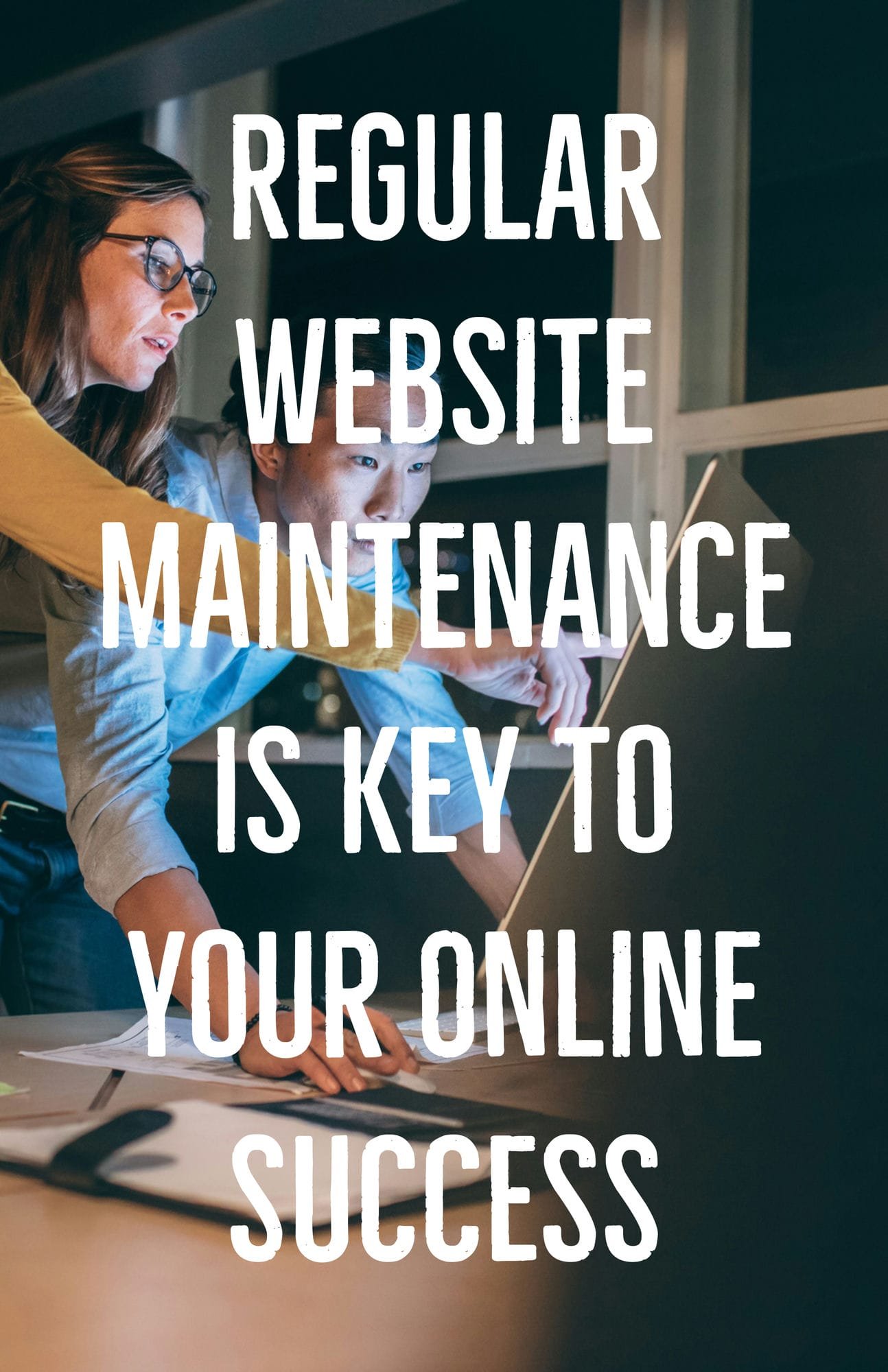
Having a strong online presence is crucial today. Ensuring optimal performance for your website is not a choice, but a necessity. Regular website maintenance is a crucial element often overlooked by many. However, it’s the key to ensuring online success. From boosting site performance and enhancing user experience to optimizing for SEO and ensuring security, regular updates can make a world of difference.
In this post, we’ll delve into why regular website maintenance is so critical to your online success and provide practical tips to keep your website functioning at its best.
So, let’s get started on this journey to unlock your website’s full potential.
The Benefits of Regular Website Maintenance
Investing time and resources in regular website maintenance can yield significant returns, including:
- Enhanced user experience: A well-maintained website offers a seamless and enjoyable experience for visitors. This can result in higher engagement, longer session duration, and ultimately, increased conversions.
- Improved SEO: Search engines prioritize websites that are regularly updated, offer fast loading times, and provide valuable content. Regular maintenance helps improve these factors, boosting your website’s visibility and organic traffic.
- Increased credibility: A well-maintained website reflects professionalism and can help establish trust with potential customers. Customers are more likely to purchase from businesses they trust and websites with a professional look and feel.
- Reduced website downtime: Regular maintenance helps identify and resolve any existing issues before they become major problems, reducing the risk of website downtime, which can have a huge impact on your business.
- Improved website security: Regular maintenance helps ensure security updates are applied to your website on a regular basis, protecting against cyber-attacks and malicious activities.
- Increased website speed: Website maintenance can help identify any issues that may be hindering the performance of your website, such as an inefficient code or unoptimized images. By fixing these issues, your website will run faster and smoother.
What Website Maintenance Involves
Website maintenance is an ongoing process that covers a range of tasks.
These include:
- Content updates to keep your website relevant and fresh
- Regular website backups to protect against data loss
- Security monitoring and updates to guard against potential threats
- Checking website speed and making necessary optimizations
- Fixing broken links to improve user experience and SEO
- Monitoring website analytics to make data-driven decisions
Now, let’s explore each of these tasks in more detail.
Content Updates
Regularly updating your website’s content is crucial to keep it relevant and fresh. This could involve adding new blog posts, updating product information, or revising company details. Consistently updated content can also improve your site’s SEO, as search engines reward websites with up-to-date and valuable content.
Content tips:
- Schedule regular content updates to ensure your website is constantly fresh and relevant.
- Make sure the content is informative and engaging, so that it resonates with visitors.
- Keep track of new industry trends, product features and customer needs to create content that’s useful and timely.
Website Backups
In a digital world where accidents and cyber threats are ever-present, having a recent backup of your website is essential. Regular backups allow you to restore your site quickly in case of any technical glitch or security breach, minimizing website downtime and potential losses.
Website backup tips:
- Set up a regular automated backup schedule to ensure your site is always protected.
- Store multiple copies of backups on different systems for extra safety.
- Choose an appropriate storage system for your backup files depending on the size of your website and amount of data.
Security Monitoring and Updates
With increasing cyber threats, it’s essential to regularly monitor your website for potential security issues and install necessary updates or patches. This helps protect your site and its visitors from malware, hacking attempts, and other security risks.
Security tips:
- Set up a reliable security monitoring system to continuously look for potential threats.
- Install the latest software updates and patches to keep your website secure.
- Use strong passwords and two-factor authentication for extra protection.
- Keep an eye out for suspicious activity, such as strange logins or new users.
Checking Site Speed
Website speed is a significant factor in user experience and SEO. A slow-loading website can lead to frustrated visitors, higher bounce rates, and lower search engine rankings. Regular maintenance should include checking your site’s loading times and making necessary optimizations to ensure it loads quickly on all devices.
Site speed tips:
- Use performance testing tools to measure your website’s speed and analyze loading times.
- Make sure the page size is optimized by compressing images, minifying code, and reducing redirects.
- Ensure the server is running efficiently and hosting plans are up to date.
- Invest in a reliable hosting provider that offers good support for web hosting.
- Utilize a content delivery network (CDN) to reduce loading time for global visitors.
Broken Link Checks
Broken links can harm your site’s SEO and user experience. Part of regular maintenance should involve checking for and fixing any broken links on your site. This will help ensure a seamless experience for your visitors and prevent any potential negative impact on your search engine rankings.
Broken link tips:
- Use link checking to find and broken links on your website.
- Monitor new links for any potential problems or errors.
- Regularly check all outgoing links to ensure they are still active and relevant.
Analytics Monitoring
Regularly monitoring your website’s performance using analytics tools like Google Analytics allows you to make data-driven decisions. You can identify trends, track user engagement, and pinpoint areas of improvement, which will enable you to optimize your website for the best possible results.
Analytics tips:
- Set up goals and track progress on a regular basis for the most accurate results.
- Monitor user behavior to identify any areas of improvement and optimize accordingly.
- Regularly review your website analytics reports to stay up to date with changes in traffic, performance, conversions, etc.
- Utilize A/B testing tools to compare and optimize different elements to get the best results.
Functionality Checks
In addition to checking your website’s core features, regular maintenance should include testing the functionality of different elements. This could involve checking if buttons are working properly, forms are submitting correctly, or scripts are functioning without any errors. Making sure everything is working as intended will improve user experience and ensure a smooth journey for visitors.
Functionality tips:
- Test all forms, buttons, and links to make sure they are working as expected.
- Check all scripts on the site to ensure they are running without any errors.
- Verify all third-party integrations to make sure everything is up and running.
- Monitor website logs regularly for any clues of potential functionality issues.
Compatibility Testing
Testing your website for compatibility also forms an essential part of regular maintenance. This involves checking if the website is working properly on different browsers, devices, and operating systems. Ensuring that your site is compatible with all major browsers and devices will improve user experience across the board.
Compatibility tips:
- Test the website on a range of different browsers and devices.
- Make sure the website is responsive, meaning it adapts to different screen sizes.
- Use cross-browser testing tools to identify any potential compatibility issues.
- Check on multiple operating systems like Windows, Mac OS, and Linux for full coverage.
Wrap Up
Regular website maintenance is not just a matter of ticking boxes; it’s the backbone of your online presence. It encompasses various aspects such as regular updates, performance optimization, user experience improvement, SEO optimization, security updates, downtime minimization, content updates, and ensuring optimal speed. The diligence you show in maintaining your website reflects the dedication you have towards your online success.
However, we understand that continuous website maintenance can be a daunting task, especially if you need to balance it with other pressing business operations. That’s why at Graticle Design, we offer comprehensive website maintenance services. We ensure your website is always up-to-date, secure, efficient, and effective.
From regular health checks to instant fixes, our team will take care of the intricacies of website maintenance. This allows you to focus on what you do best – running your business and serving your customers.
Remember, a well-maintained website leads to better performance, superior user experience, improved SEO, and ultimately, a boost in your business success online.
Ready to take the first step towards optimal website maintenance and online success? Contact Graticle Design today. Let us handle the complexities of website maintenance so you can focus on growing your business.
Call us (360)450-3711 today.





